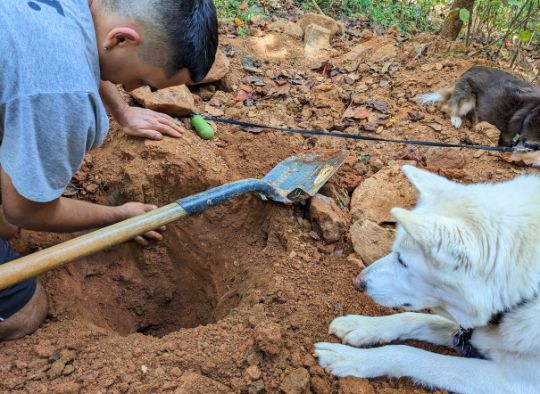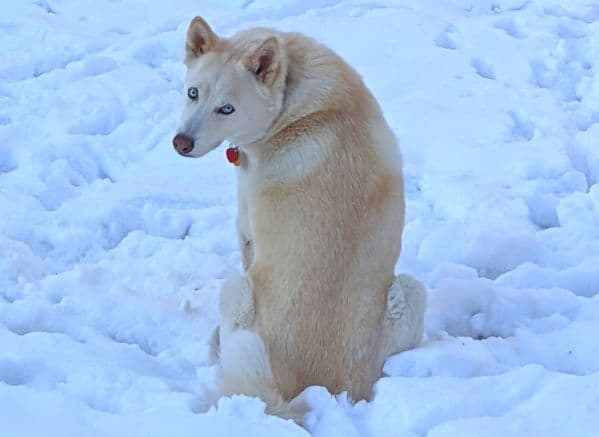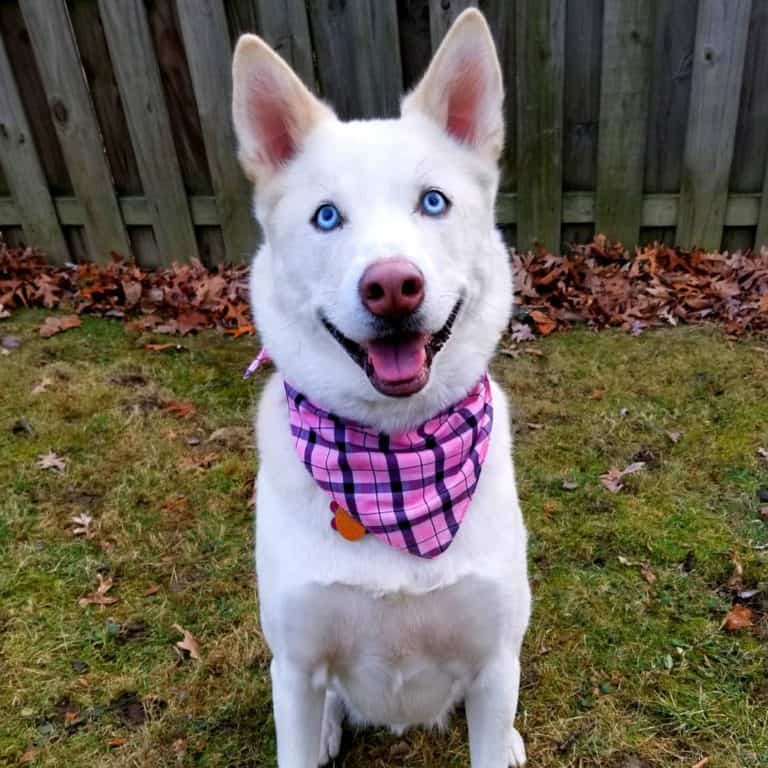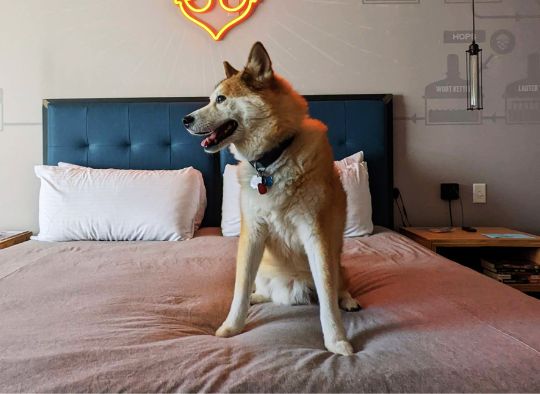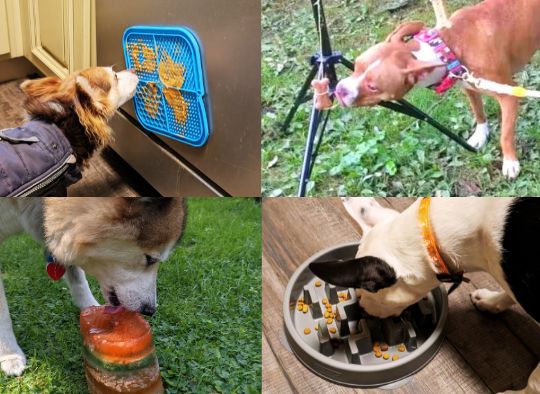How to Potty Train a Puppy in 7 Days
As an Amazon Associate, I earn from qualifying purchases. We may receive a commission for purchases made through these links. This site also contains affiliate links to products besides Amazon, like Etsy. We may receive a commission for purchases made through those links too (at no additional cost to you).
The Easiest Way To Potty Train Your Puppy
One of the biggest challenges dog owners face when getting a new puppy is potty training. Constantly cleaning up bathroom accidents after your new dog takes a lot of time and money. Especially because the bigger they get, the bigger the mess there is to clean. Over the years, we have had numerous canines of all ages and sizes in our house and have learned how to potty train a puppy in 7 days. Get ready to let this guide show you how simple housebreaking your dog can be! Don’t forget to join our pack and get the puppy potty training chart from our Freebie Library or you can purchase it in our shop!

The Importance of Potty Training
Potty training your pup is important for so many reasons. Think about it, NOBODY likes cleaning up bathroom messes indoors. Not only is it gross but it can permanently destroy the items that get urinated or defecated on.
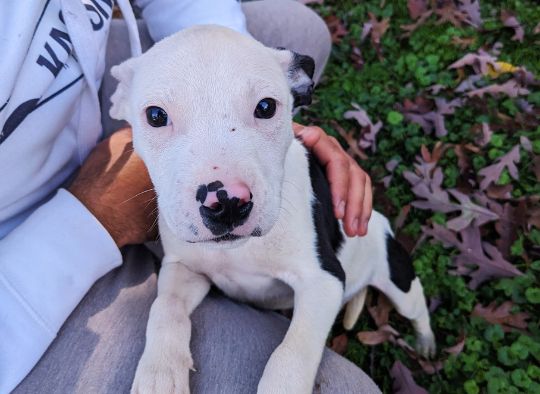
If your dog isn’t housebroken, it will be very difficult to take your puppy places because of the possible destruction, not to mention the embarrassment. Accidents outside your home can result in fines and greatly limit where you can travel with your dog. Even if you don’t plan on taking your puppy to different places, (though socializing your dog is crucial to them having a happy and healthy life) making sure they don’t make a mess in your own house is still important.
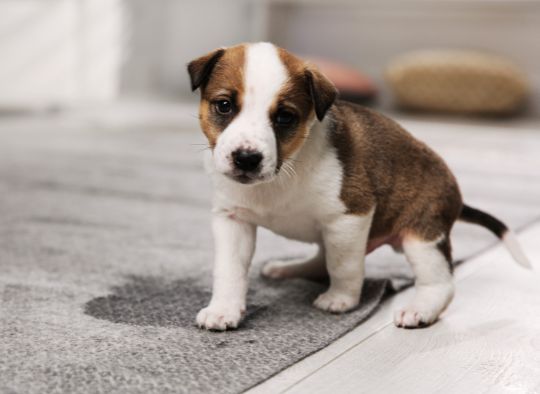
Nobody wants to constantly clean up bodily fluids around their house. It will be harder to have visitors, keep and have nice things, not to mention leave you stressed and frustrated with your dog. Having to regularly replace items and buy cleaning products can also cost quite a bit of money.
Setting Realistic Potty-Training Expectations for Your Puppy
Any time you start training your dog something new, it’s important to set realistic expectations. Though this guide will help you learn how to potty train your dog in 7 days, remember that training any behavior is a marathon- not a race. Potty training is going to require time, effort, and consistency on your part beyond the first week.
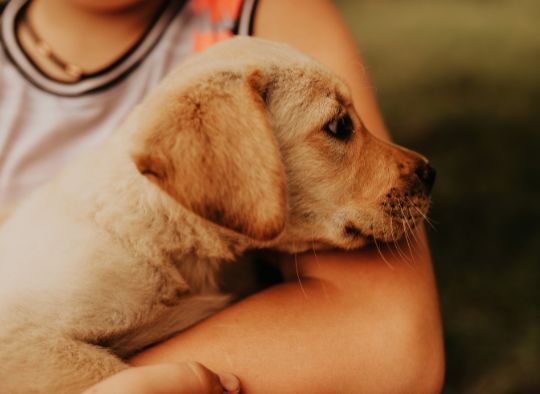
And keep in mind, your pup is not the only one that will be learning during this process. You will actually be doing most of the work! During the first 7 days, you will be building the foundation for long-term success. Mistakes will happen and that’s ok because it is perfectly natural- no one is perfect.
One thing you will want to figure out during this process is how long you should expect your dog to hold their bladder. This will depend on their age, size, medical issues, and the type of medications they are on. The general rule for puppies is they can hold their bladder one hour for every month of age. Thinking that you won’t have to let your 3-month-old puppy out for 10 hours is unrealistic.
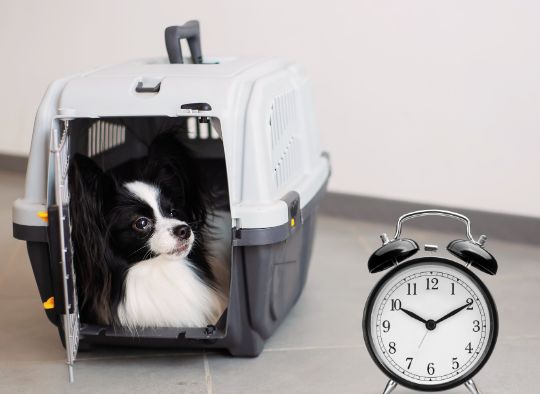
The length of time your dog can go without using the restroom will change as they get older. If your dog suddenly starts having accidents indoors after they are potty trained, don’t get frustrated or give up! This abrupt change in behavior could be caused by either a medical or behavioral problem. The good news is there is usually a way to fix it!
If your dog has suddenly started wetting the bed, read this post for help figuring out how to get them to stop.
Preparing to Potty Training Your Puppy
If you are bringing a new puppy into your home, you know that you will need to do some potty training. To make this process go as smoothly as possible, there are two important things that you will need to do so you will be fully prepared. First, you’ll want to decide on your specific potty training plan. And second, you’ll need to do a little shopping to make sure you will have the necessary supplies to put your plan into action.
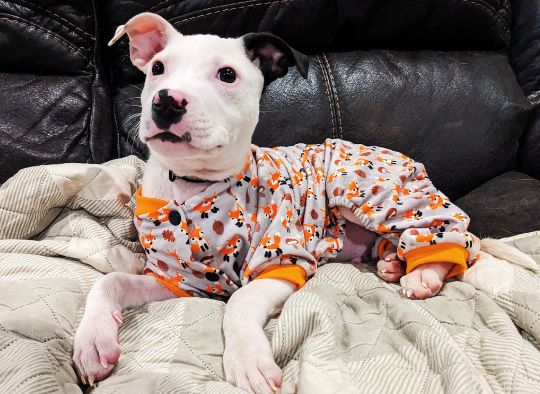
Developing Your Potty Training Plan
One of the most important things in teaching anyone anything is being consistent. This means that it is incredibly important to decide what and how you are going to teach your dog to go to the bathroom outside. To make it easier, here are the main questions you will want to decide on and a few things to think about when you are putting your plan together:
- Do you want to train your dog to go to the bathroom on command? (this is useful if you live in a rainy or cold climate but you will have to be careful that no one accidentally gives the command inside)
- Do you want your dog to ring a bell or push a button to let you know that they need to go out? (they may learn to push it whenever they want to go outside- not just to use the bathroom)
- Do you want your dog to go in a particular area in your yard? (this is not guaranteed, but there are steps you can take to make it more likely).
- Are you going to use treats? (treats can help but are not needed-especially if your dog is not food-motivated)
- Will you be using a crate? (crates are great unless your dog already thinks that it’s okay to go to the bathroom in it).
Now that you have formulated your training plan, I want to warn you not to get too attached to it. You will have to stay flexible on some of these points, especially if you find that your dog is struggling with something. You may find that your dog is having problems making the connection with pushing a button in order to go outside. In cases like this you will have to ask yourself, is this the hill you want to die on? Typically, the most important thing is that your dog stops having accidents in your house- not that they learn to do extra tricks to make it easier for you to tell when they need to go out.
Buying Your Puppy Potty Training Supplies
Once your potty-training plan is settled, it’s time to make sure your supplies are in order. If you have decided to use items like a crate, bells, buttons, or treats, you will want to make sure you have them on hand. You will also need to make sure you have the appropriate cleaning supplies. Because dogs have such a great sense of smell and tend to go to the bathroom in the same spot (or where other dogs go) it’s important to get the right cleaner.
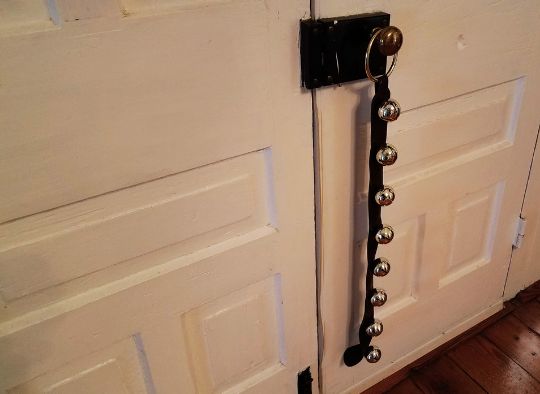
You will want to get something that is specifically made to clean and neutralize dog urine, so they aren’t tempted to continue to mark that spot. We use Simple Green Oxy Dog Stain and Odor for any quick cleans. I found it best to soak up most of the urine with an old towel first. This will save you from going through a ton of paper towels!
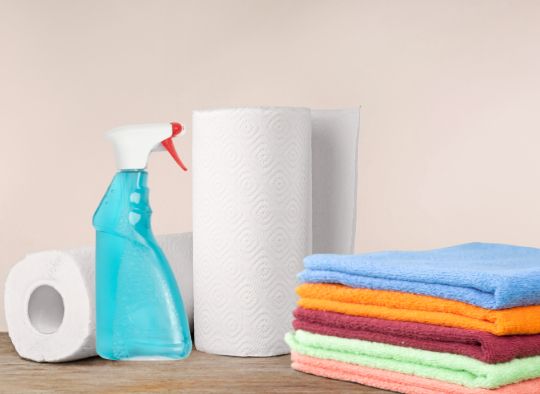
If you have carpets in your home, you may also want to invest in a Bissel carpet cleaner so you can deep clean the carpets regularly. We have a Bissel ProHeat 2x Revolution Pet Pro Plus and it’s been a game changer for keeping our carpets clean and stain-free.
You will also need a way to keep track of when your puppy is using the restroom and other details to help keep everyone on the same page and prevent future accidents. You can dedicate a notebook for this or get our Puppy Potty Training Planner.
How to Potty Train A Puppy in 7 Days
In order to potty train your dog in just one week, you should know that it will take time, dedication, and attention on your part. I recommend that, if possible, you stay home and off electronics like your phone or TV for the first 2 or 3 days to create a solid foundation for you and your pup. Giving your full attention to watching and learning about your new dog these first few days will be crucial. Remember- you have just as much to learn during this process as your pup does. Any accidents that happen during this time are usually your fault because you weren’t paying close enough attention or didn’t respond instantly.
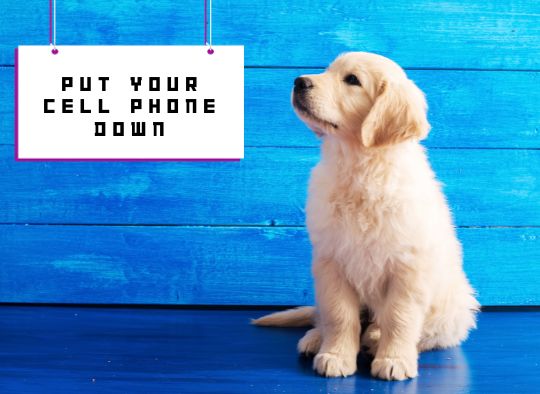
The main thing that makes my potty-training method different from others is that I strongly believe in recordkeeping and patterns. By keeping track of key behaviors and times, you will be able to predict when your puppy will need to use the restroom.
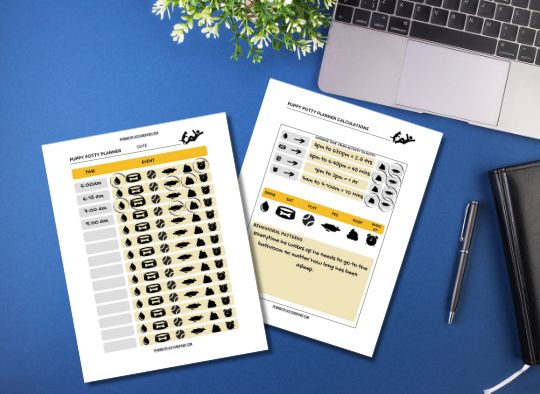
If you think about it, everyone develops some sort of bathroom pattern. They may tend to use the restroom every morning as soon as they wake up. Or have their first bowel movement after their morning coffee or around a particular time each day. There are patterns everywhere including your dog’s bathroom schedule. Being able to recognize them will help speed up the process of eliminating the accidents that occur in your home.
The 7-Day Potty Training Framework
During the first 7 days, you will be building the foundation for a lifetime of potty-training success. This plan will help you hack the secret to figuring out your pup’s bathroom triggers. By the end of the week, you will be not only able to recognize your dog’s individual bathroom patterns but also how your dog will communicate their bathroom needs to you.
You will be able to recognize WHEN they will likely need to use the restroom and the small signs they give BEFORE they go. Figuring these patterns out will help you recognize when you need to get them outside before an accident occurs.
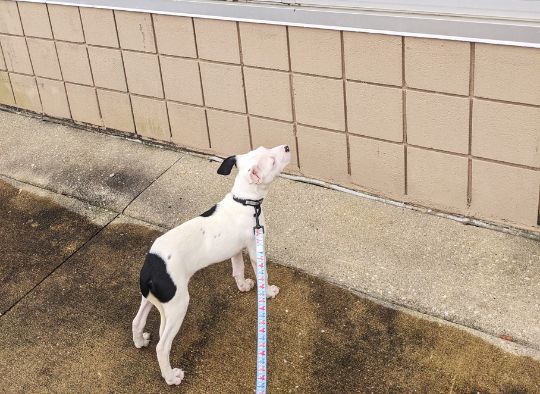
If possible, try to spend the first few hours that you bring your puppy home outside. Your dog will be encountering a ton of new things- they will be in a new place with new smells and new experiences. Depending on their personality, they may either find these new things exciting or scary. Either way, it will likely result in frequent bathroom breaks.
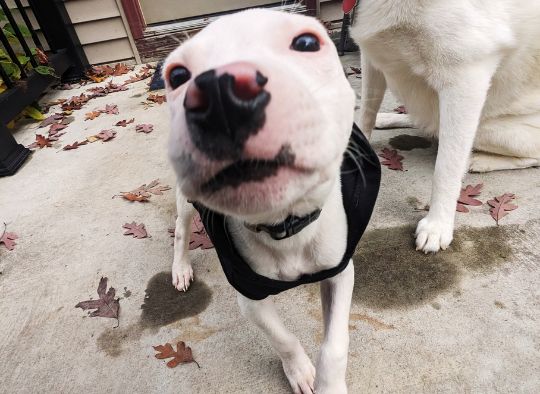
The more time you can spend outside of your house the first few days, the better. Why should you spend so much time outdoors? Because it’s an easy win! Simply put, if your dog is outside, they can’t have an accident INSIDE. It’s a nice easy cheat that works in your favor. The fewer accidents they have indoors, the better. It helps them form the habit and learn WHERE it’s okay to go to the bathroom. Not to mention, less cleaning and frustration on your end. Just don’t forget to provide water while you are enjoying the sunshine!
Basics of Potty Training
I strongly believe that positive reinforcement is the BEST way to teach your puppy while building and maintaining a strong trust-filled bond. During this process, you will want to focus on praising your pup EVERY TIME they use the bathroom outside. To make it even more rewarding, give them treats, talk in a happy voice, give pets, anything to make your puppy’s tail wag.
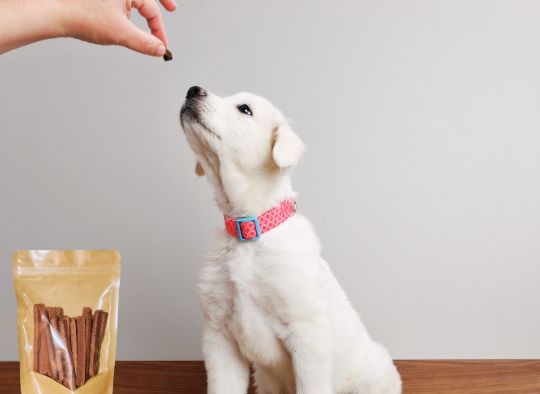
What you don’t want to do is to yell or punish your dog for going to the bathroom inside. You don’t want to teach your dog to HIDE their accidents, you want them to learn to AVOID accidents. You also don’t want your dog to fear you.
Training Your Puppy to Use the Bathroom on Command
If you plan on training your pup to go to the bathroom on command, you will want to say the command you’ve’ chosen every time they start to go to the bathroom and reward them immediately after. As you begin to recognize the cues your dog gives before they use the bathroom, start to give the command just before they start to go. And don’t forget to always reward them after! Soon this behavior will be fully trained.
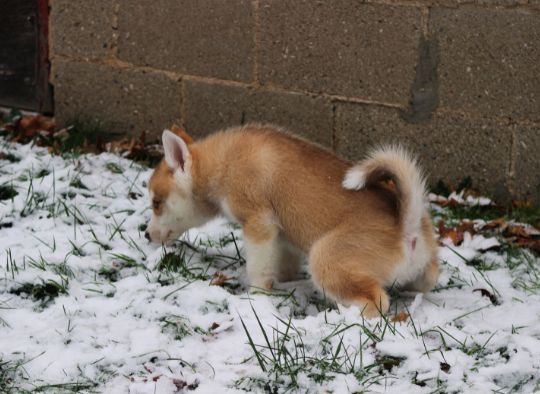
If you plan on training your puppy to use a bell or button when they need to use the bathroom, you can start incorporating that into your training now as well.
Helpful Tip: Be careful what phrase you decide to use and let everyone know that it is off-limits indoors. I taught my oldest dog Remington the command ‘go potty’. After the first few weeks, someone accidentally gave his command inside the house, and he immediately peed! If you train your dog to go the bathroom when you give the command, you can’t get mad when they listen!
Use a Puppy Potty Training Chart
Keeping track of the main events involved in your puppy going to the bathroom is the key to potty training your puppy in 7 days. Puppies tend to need to use the bathroom after they eat, drink, play, and wake up. These are the events that you will be keeping track of. (Don’t forget to get your puppy potty training chart!)
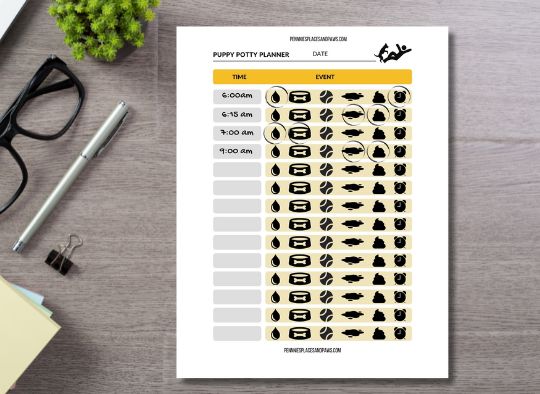
You will want to start your recordkeeping as soon as your new furry friend is in your possession. After the first few hours together, you should start getting an idea of how often and how much your dog will need to go outside. Your puppy may use the bathroom all at once, or they may tend to urinate in small amounts but several times in a short period.
Our newest puppy Francis tends to pee twice before he is ‘empty’. If we only let him pee once before we go inside, I know that he will just need to go again soon, or that it will lead to an accident inside. You may even start to notice certain behaviors your dog will do before they urinate or defecate. Francis will suddenly stiffen and then sprint to a preferred spot before he poops.
Once you bring your puppy indoors, you will want to continue to closely monitor their behavior. Make sure you are still taking them outside immediately after they do any of the potty-training events (drink, eat, play, or wake up.). You will also want to rush them outside if they start showing any of the precursor behaviors that you will start to recognize.
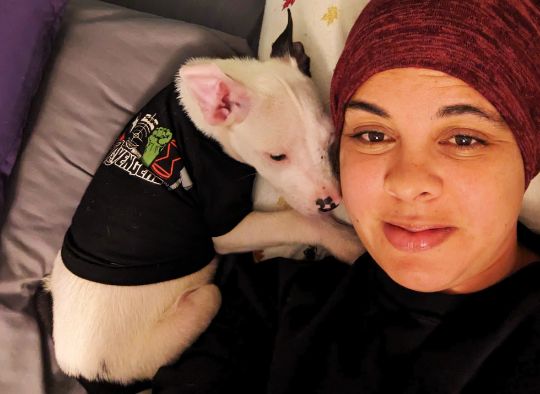
If you are not able to closely watch your dog when you are indoors, it is best to keep them in a properly sized crate. Dogs naturally don’t like to go to the bathroom where they sleep. This means that most pups will avoid going to the bathroom inside their crate if they can help it.
The exception to the rule is if you have a dog that was kept too long in a crate and had been forced to regularly use the bathroom in it. This can happen with shelter dogs or pups from backyard breeders. If this is the case, you may have to be creative in setting up the crate or using an alternative space to help break this habit.
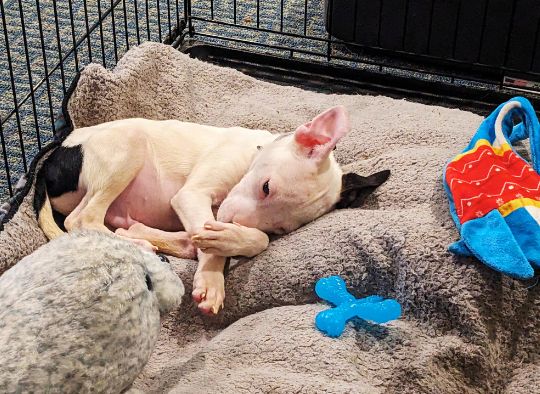
Francis and his litter were found living in their own feces before moving to a shelter. He learned that it was o.k. to go to the bathroom in the crate. Since I work from home, we were able to avoid having him in a crate for more than an hour at any time until he learned to only go to the bathroom outside.
Reviewing Your Potty Training Chart
At the end of the day, go over your reports for the day. Take this time to see what patterns you can detect and adjust your expectations for the next day. Figuring out your puppy’s bathroom patterns will help you avoid accidents when you are indoors. Pay special attention to your notes about behaviors your dog does before they go to the bathroom. This will be things like their posture, sniffing, circling, different strides, breathing.
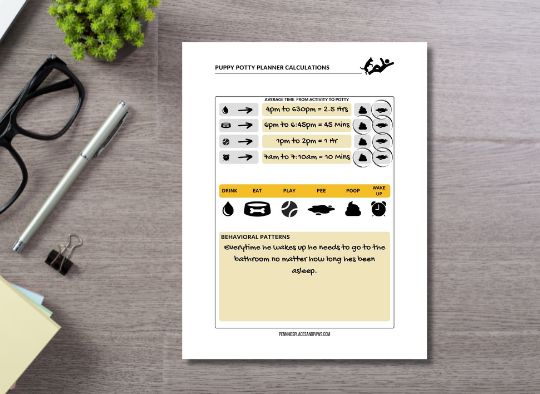
Remember not to assume too much too soon. Mistakes will happen during this learning process on both sides. Two of the more common mistakes are because the humans involved are not all on the same page with potty training. Multiple people working with a dog can be confusing.
Communicating with each other about when your puppy went out last is important to avoiding bathroom accidents inside. Each person in your household may also notice different things about your puppy during this process. By writing it all down, it will help everyone and keep you all on the same page.
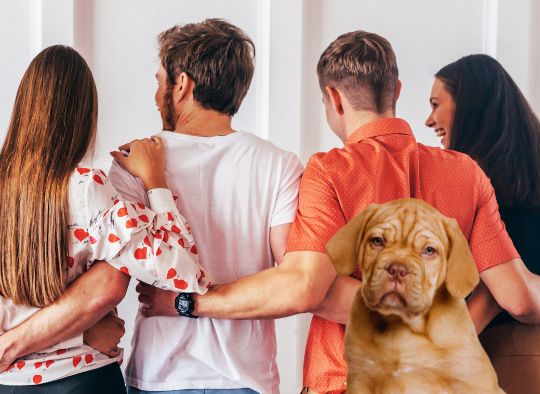
The other common reason for indoor accidents is that people will give too much credit to their puppies. It’s easy to assume that after a day or two of success, that your dog is completely housebroken. Try to remember that they are still puppies. It’s easy for them to get distracted and forget to listen to their bodies if they are having fun.
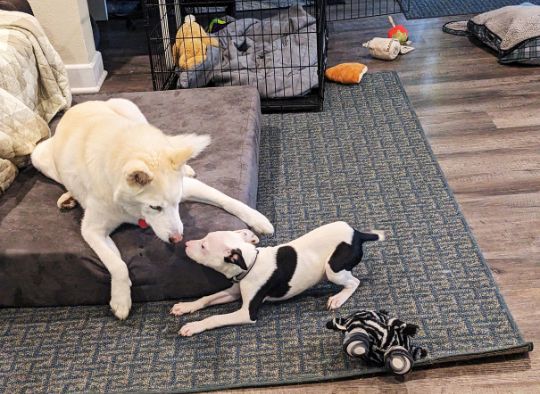
Your puppy will have to learn not only WHERE it’s ok to go to the bathroom, but also how to TELL beforehand that they need to go to the bathroom. Add this to your pup learning how to control their bladders and it’s easy to be more understanding about the accidents they may have indoors.
Potty Training Your Puppy Overnight
Potty training isn’t just a daytime activity. You will have to keep training your puppy at night too. Remember that young dogs typically can only hold their bladder for 1 hour for every month of age. This means that you will have to set your alarm throughout the night to let your puppy out.
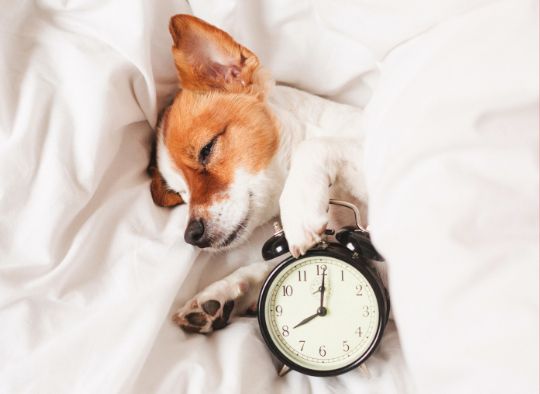
To get an idea of WHEN you will need to set your alarms, take a look at your notes and calculate the average time between when your dog went to the bathroom. These will be the increments you will want to set your alarm for throughout the night.
If you wake up, and your dog is still sleeping, you can either take them out anyway or snooze your alarm for an additional 10-20 min and check again. As time goes on, you will be able to lengthen the time between the overnight bathroom breaks until you and your puppy are sleeping through the entire night!
The 7-day Potty Training Plan Schedule
To make potty training your puppy as easy as possible, we put together a schedule that will break down what you should be working on each day. Use this schedule as a guideline, but you may move through the steps faster or slower depending on your puppy and how well you are able to pick up their behavioral cues.
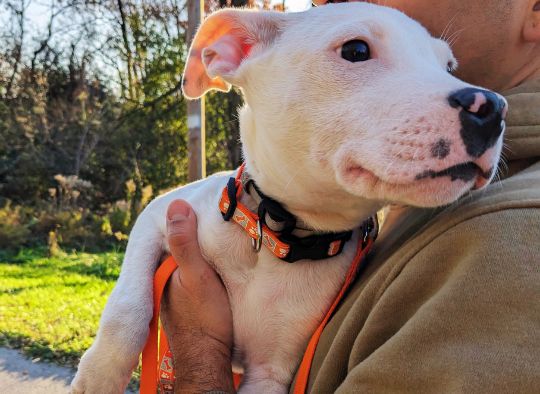
Day 1
- Spend most of your time outside and give a reward any time your dog uses the bathroom outside. Start your record keeping. At the end of the day, calculate the average time between your pup’s bathroom breaks and set your alarm accordingly for overnight. Take note of any consistent behavioral cues that your puppy gives before they use the bathroom.
Day 2
- Continue your recordkeeping and reward system. Slowly start spending more time indoors with your puppy. Keep your pup in a crate if you are not able to keep a close eye on them. Continue to take them outside immediately after they are done playing, eating, drinking, or right after they wake up. Keep monitoring your dog closely for bathroom behavioral cues. Calculate the average time between bathroom breaks and adjust your alarms for overnight.
Day 3
- Continue your recordkeeping and reward system. Continue to increase your time indoors and allow your dog out of its crate only when you are keeping a close eye on them. Keep taking your dog out immediately after they play, eat, drink, or wake up. Monitor closely for bathroom behavioral cues. Calculate the average time between bathroom breaks and adjust your alarms for overnight.
Day 4 & 5
- Continue your recordkeeping and reward system. Start to adjust your dog’s scheduled bathroom breaks to the behavioral and time patterns that you have seen instead of just after typical events like playing, eating, and drinking. You will still want to take your dog out immediately after any energetic bout of play or long naps.
- At this point, you should be able to more reliably tell when your dog will need to use the bathroom by their behavioral cues. This could be noticing that your dog is going to the door, staring more intently at you, heavy breathing, etc.
- Be warned that your puppy will be more likely to have accidents during this time as you and your dog start to perfect communication between the two of you. To help keep any accidents to a minimum- when in doubt, take them out. It’s always better to be wrong about them needing to go outside than to be wrong and have them go to the bathroom indoors.
- When you go over your potty-training records in the evening, take a moment to see what adjustments need to be made for the next day. Decide whether you need to let your puppy out more or less frequently, or if you should depend more or less on their behavioral cues, etc.
- Calculate the average time between bathroom breaks and adjust your alarms for overnight.
Day 6 & 7
- Continue your recordkeeping and reward system. At this point, your dog shouldn’t need to be as closely monitored (for potty-training purposes). You should also be able to reliably pick up on their behavioral cues and have a good idea about their routine times for when they need to go outside. Indoor bathroom accidents should be minimal. You should still be taking your puppy out immediately after any energetic bout of play or long naps. Remember that it’s still a puppy so complete and total bladder control is not possible until they are a bit older.
- You should also slowly increase the time between your puppy’s overnight bathroom breaks.
Common Puppy Potty Training Mistakes to Avoid
Potty training is a rite of passage that every puppy parent goes through. Back in the day, I used to give potty training seminars while working at one of the major pet stores in the United States and have been able to pick out several common potty-training mistakes that you should avoid if you want this process to go as smoothly and quickly as possible.
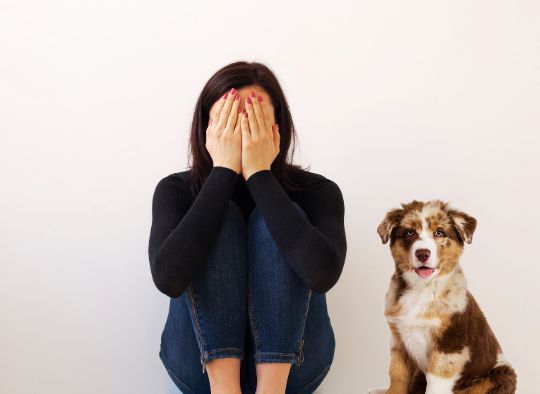
- Don’t take your dog back inside immediately after they have used the bathroom. For dogs that like being outside they may delay going to the bathroom so they can stay out longer. If they don’t like being outside, they might start to fake going to the bathroom so they can be brought in sooner. The best thing to do is to vary the amount of time they get to remain outside after they use the bathroom. This way, they don’t see using the bathroom as being directly associated with going back indoors.
- If your puppy has an accident in the house, don’t yell at them, rub their faces in it, etc. This only teaches them to be scared of you and to hide where they have their accidents. If you catch them in the act, you can try to startle them to get them to stop and immediately take them outside to finish.
- When your puppy is done going to the bathroom outdoors, heap extra praise and treats on them. Potty training is a marathon- not a race. There will be accidents and mistakes on both sides. It’s a learning process for both of you. Any accident that your puppy has during the training process is probably more your fault than theirs.
- Be cautious about using pee pads indoors. Pee pads can be useful in some situations; however, your dog may find them confusing. When you start to potty-train your dog, you want to give them clear directions like that the bathroom is outside, not inside. Using pee pads can give them mixed signals. Also, dogs don’t have perfect aim. This means that there will be times they miss the pee pads, and you will still have a mess to clean up.
- Be aware of potty-training issues due to similar surfaces. If your puppy has spent most of its life in a kennel or crate, they may think it’s ok to go to the bathroom there. They might confuse kennel floors with cement floors and therefore think it’s ok to use the bathroom on the cement in your basement. They may confuse grass with rugs and carpets. If your dog seems confused, you may need to avoid having them in these areas without supervision until they understand the difference.
It was a mess when our dogs first encountered carpeted floors after living with laminate and wood floors their whole lives. It took a little time and re-training for some of them to realize that carpets were not the same as grass.
- If you think your puppy needs to go out, drop what you’re doing and take them outside immediately. Puppies don’t have great bladder control. By the time they realize they need to go the bathroom, you may only have a few seconds to get them outdoors.
- Clean up all bathroom accidents immediately and thoroughly. Remember that dogs have great noses and tend to use the same area to go to the bathroom. That means if you don’t clean an area up properly, your puppy (or other dogs) will be more likely to go to the bathroom there again. This will make potty-training your pup more difficult.
Success with the 7-Day Potty-Training Method
If you are wondering if potty training your puppy in only 7 days is even possible, it is! We’ve used this method for each of our dogs and our fosters with amazing and quick success. The more diligent we were with paying attention to the dog and keeping a record of when and how often they went to the bathroom, the quicker and smoother the process was.
My first dog, Remington, only had one accident as a puppy which was when someone gave the ‘go potty’ cue indoors. Kiara was the first puppy that Danny and I brought home together. For the first two weeks, she only had a handful of accidents in our apartment as Danny and I had to work out a system to help us communicate with each other. Charlie and Emma came to us already potty trained and the transition into our home went very smoothly.
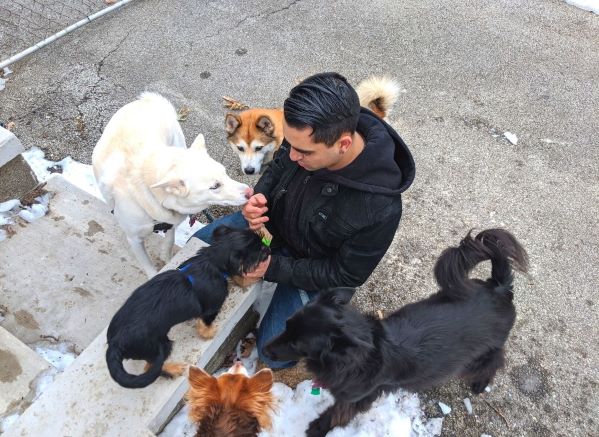
Francis is our latest puppy and we brought him home at 9 weeks of age. We spent the first couple of hours outside with him before we brought him inside our home. We spent the next few hours frequently taking him outside after he ate, drank, played, woke up from his naps, or if we even THOUGHT he might need to go to the bathroom.
By the time we were ready for bed, he was frequently going to the door when he needed to pee. He did have one accident the next day because he went to the door, and I didn’t drop what I was doing to take him out immediately. He ended up peeing by the back door.
Francis had his second accident in the house on Day 5 when Danny was playing video games in the basement. The bass on the TV was turned all the way up causing the house to shake. This startled me and all the dogs- Frances ended up peeing where he stood.
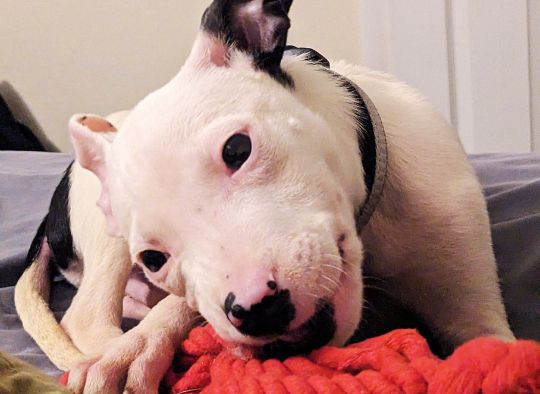
Over the next three weeks, Francis only had an additional two accidents indoors (so 4 total). One of these was by the backdoor again when we didn’t see him go to it. And the other happened when a friend came over to visit.
This was the first visitor we had in the house with him here. He was excited and running around like crazy when he suddenly stopped. He stiffened, smelled the ground briefly, and peed. I saw he was going to go right before he started and stopped him a moment too late. I then took him outside and he finished going out there.
We used the crate minimally during this time since he had already formed a habit of going to the bathroom in it. He had 3 accidents in the crate before we limited his time in it to an hour max. We’ve since been able to increase that time to 6 hours and he has stopped viewing it as an appropriate bathroom area.
Congratulations!
You survived the week and if you have been diligent in paying attention to your puppy and doing your recordkeeping, your dog is officially potty-trained! Please remember that your dog may still have the occasional accident over the coming weeks (especially if you have a puppy or a special needs dog). But overall, your pup knows that they should only go to the bathroom outside.
I suggest that you still keep a close eye on them in areas where other dogs may have urinated, or in places where they are super excited, scared, or uncomfortable. Now that you have completed our 7-day puppy potty training plan, you have set up a strong foundation that will allow you to bring your dog with you on your travels. Get ready to introduce your pup to many new and exciting adventures!
Get your potty training chart in our shop or from our member’s only Freebie Library! Not a pack member? You can sign up here.
Pin For Later:
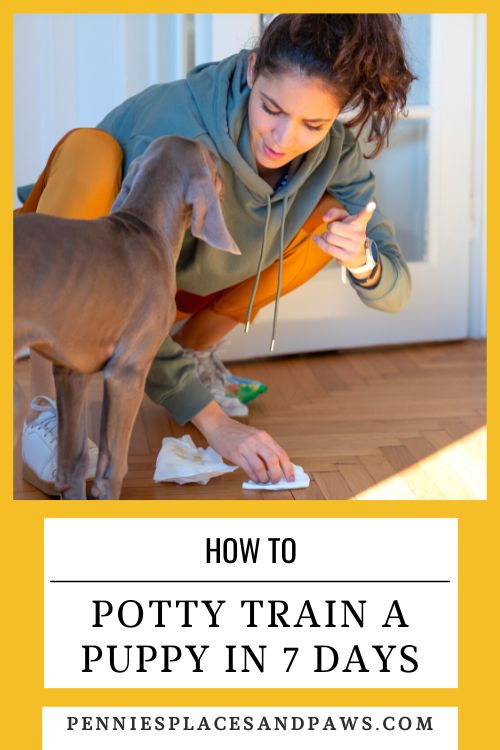
Amazon and the Amazon logo are trademarks of Amazon.com, Inc, or its affiliates.

